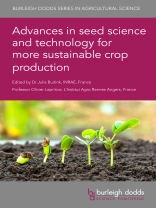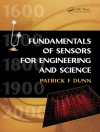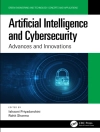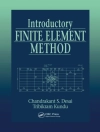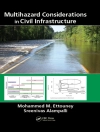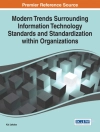- Considers best practices for ensuring seed quality and health, such as phenotyping and non-invasive techniques, including hyper=spectral imaging and x-rays
- Provides a comprehensive review of our understanding of seed biology and the impact of genetic and environmental factors in determining seed longevity, dormancy and rate of seedling emergence
- Assesses key challenges facing seed science, including the need to mitigate the effects of climate change on seed quality and production
Tabella dei contenuti
Part 1 Understanding seeds: from biology to the field
1.Seed dormancy and germination: a critical update: Henk W. M. Hilhorst, Wageningen University & Research, The Netherlands and University of Cape Town, South Africa;
2.Understanding the effects of maternal environment in controlling seed dormancy: Roberto L. Benech-Arnold, Cátedra de Cultivos Industriales, IFEVA-Facultad de Agronomía (CONICET/UBA), Argentina; M. Verónica Rodríguez, Cátedra de Fisiología Vegetal, IFEVAFacultad de Agronomía (CONICET/UBA), Argentina; Diego Batlla, Cátedra de Cerealicultura, IFEVA-Facultad de Agronomía (CONICET/UBA), Argentina; and Rocío Fernández Farnocchia, Cátedra de Cultivos Industriales, IFEVA-Facultad de Agronomía (CONICET/UBA), Argentina;
3.Applying population-based threshold models to quantify and improve seed quality attributes: Kent J. Bradford and Pedro Bello, University of California-Davis, USA;
4.Biotic sources of seed losses influencing germination and emergence success in crop plants and agricultural weeds: James W. Dalling and Adam S. Davis, University of Illinois Urbana-Champaign, USA;
5.Advances in understanding the genetic and environmental factors determining seed longevity: Julia Buitink and Olivier Leprince, Institut Agro, Univ Angers, INRAE, IRHS, France;
Part 2 Seed quality control and treatment
6.Advances in seed phenotyping using X-ray imaging: Sherif Hamdy, Aurélie Charrier and Laurence Le Corre, GEVES, France; Pejman Rasti, Université d’Angers and École d’ingénieur Informatique et Environnement (ESAIP), France; and David Rousseau, Université d’Angers, France;
7.Advances in testing seed health: Peter Bonants, Wageningen University & Research, The Netherlands;
8.Advances in preservation of seed vigour during storage: Fiona R. Hay, Aarhus University, Denmark;
9.Enhancing seed defence mechanisms against pathogens: John Hampton, Bio-Protection Research Centre, Lincoln University, New Zealand;
10.Advances in seed priming techniques: Henry Bruggink, Incotec Europe, The Netherlands;
Circa l’autore
Kent J. Bradford is a Distinguished Professor Emeritus in the Department of Plant Sciences at the University of California, Davis. Originally from Texas, he earned his B.S. in Biochemistry and M.S. in Horticulture from Michigan State University and his Ph.D. in Plant Physiology from the University of California, Davis. He founded the UC Davis Seed Biotechnology Center in 1999 and served as its director until 2019. He received a Fulbright Scholar award in 1999 to teach in Argentina and the Career Seed Science Award from the Crop Science Society of America in 2002. He was elected a Fellow of the American Association for the Advancement of Science in 2003, and received the faculty Award of Distinction from the College of Agricultural and Environmental Sciences at UC Davis in 2007. He served as Interim Director of the UC Davis World Food Center in 2017-2018 and Associate Director in 2019-2020. He was advanced to Distinguished Professor at UC Davis in 2013 and retired as Emeritus in 2019.
